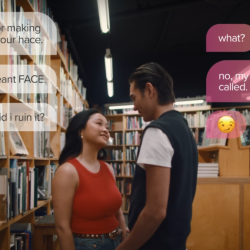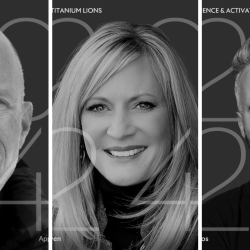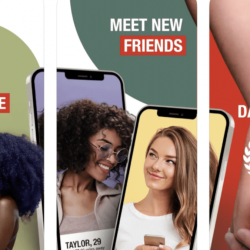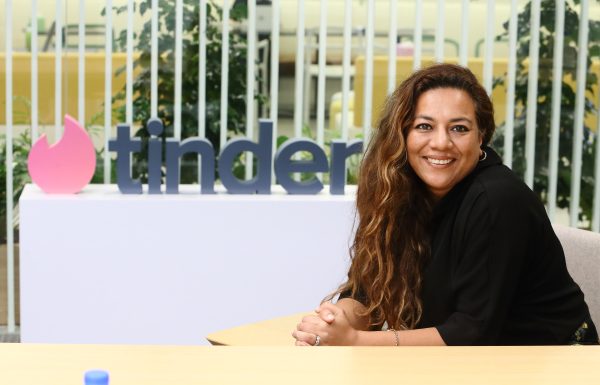
2022 marked Tinder’s tenth birthday. Yes, it’s been over a decade since swiping right reconfigured romance on a global scale. In this interview, our Editor-at-large, Natasha Randhawa, chats to Tinder’s VP of APAC Communications, Papri Dev, on the brand’s evolution, embracing diversity, social impact and more.
Papri, Tinder has become ubiquitous with not only dating, but how we talk about it. There’s even a Tinder Australia Dating Dictionary. Asia-Pacific encompasses an enormous range of cultures and languages. How do you adapt your communication strategies to resonate with users from diverse linguistic and cultural backgrounds?
At Tinder, we celebrate diversity — of gender, sexual orientation, and culture. This is especially relevant to the Asia Pacific (APAC) region, home to a rich range of people, ethnicities, and cultures. And as the biggest dating app in the world, we recognise that we do have a responsibility to continuously chip away at stigma, homophobia, transphobia and to make it easier for non-binary folks to talk about dating, sex, and relationships — of course, while respecting the individual markets’ cultural nuances.
The dating app industry is a facsimile of itself, with numerous players all vying for attention. How does Tinder differentiate itself from other dating apps across the region? How do your communications help contribute to maintaining user loyalty and Tinder’s unique appeal locally in a marketplace whose purpose is to offer endless choice?
Tinder is unique as it is the #1 most-downloaded dating app among 18-25 year olds, with over 50% of our users Gen Z (aged between 18 and 25). Indeed, this generation of young daters are more self aware, open and fluid in how they view gender, sexuality and dating than any other generation before them. What this means for Tinder, is that we’re a place of possibilities for Gen Z.
In the past, Tinder had a reputation as a ‘hookup’ app. However, there’s been an evolution towards offering users experiences beyond casual dating. Can you contrast and compare the ‘It Starts with a Swipe’ campaign that was rolled out globally, and the ‘Friends with Other Benefits’ campaign in Thailand? How do you determine what aspects of messaging should be globally consistent, and where to incorporate local nuance to make campaigns more impactful?
Localising global campaigns for APAC comes with plenty of considerations due to the region’s diverse cultures, languages, and norms. As with all campaigns, it is crucial to conduct thorough research across markets. With Tinder’s presence across the region, we have on-ground teams who fully understand and are familiar with the specific cultural nuances, social norms, and local dating behaviours. This essentially lays the foundation for the localisation of such global campaigns.
When Tinder first entered the dating scene, its user base was mostly made up of millennials aged 18-24. Today, the average age is 29. Gen Z are challenging all of the norms established by previous generations, including how they date. What specific changes have Tinder made to resonate with Gen Z users across the region? How have the brand’s communication strategies evolved to cater to changing preferences and expectations from this authenticity-driven demographic?
Gen Z singles are driven by authenticity, and are seeking loyalty, open-mindedness, and respect in their matches. They value transparency about relationship goals. 72% of Tinder users said they’re looking for someone who’s upfront about their relationship goals.1 To address this, we introduced the new feature Relationship Goals last year, offering six different intent options for young singles to choose from. Long Term Relationship is the most selected Relationship Goal on Tinder, with 40% of Tinder users globally selecting this option.
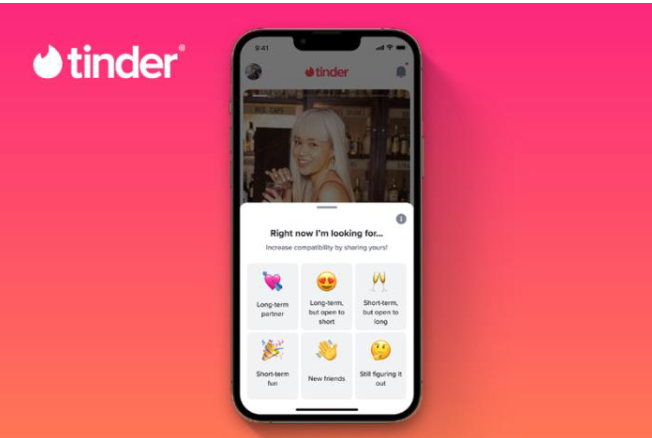
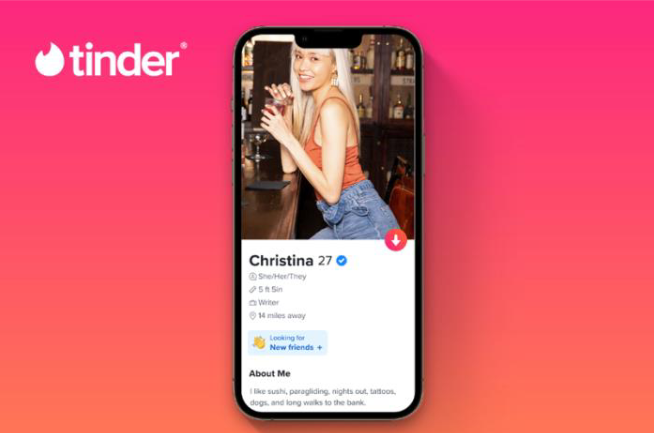
In line with this, we were inspired by how uniquely Gen Z looks at their dating lives and earlier this year, we launched our first truly global communications campaign, It Starts With A Swipe (ISWAS), which not only celebrates a diversity of possibilities, but also genders, orientations and multiculturalism of this new generation of daters. As Gen Z embraces unconventional experiences and a whole new vocabulary when it comes to dating, the campaign aims to reflect this reality through a vibrant and lush imagery, produced with a diverse cast and crew that reflects the fluid and inclusive attitude that is so inherent to Tinder.
1 Tinder In app Survey among Tinder users aged 18-24 in UK, US, AU. Data was collected between 10/18/22 – 10/28/22
Considering modern concerns around online dating, including burnout and a culture of disposability, how does Tinder aim to address these issues?
Tinder regularly shares tips and advice to help young daters have fun and fulfilling online dating journeys.
We launched the School of Swipe crash course in online dating last year, to help young singles across Southeast Asia build confidence as they navigate modern-day online dating and seek out new connections. We are continuously building upon School of Swipe, with our most recent launch of the Dating Dictionary: Consent Edition in Australia, in collaboration with consent advocate and author, Chanel Contos, to help educate daters on key consent terms and phrases.
We’ve also extended our work in helping build healthy relationships across the region, launching Let’s Talk Consent in Japan, given the centrality of the topic to dating and relationships. In India, we introduced Tinder Love and Care, a dating wellness guide for women that covers a range of topics such as sexual health, intimacy and fostering honest conversations with dates, all while prioritising self-care.
We’ve also continued to roll out other educational resources globally, such as the Campus Crush Dating Guide and A Masterpiece In Dating. Profiles optimised with various data-backed tips shared in these resources also garner more matches, helping young singles to have a more positive online dating experience. For example, 40% of members between the ages of 18-25 have added their anthem to their profile via Spotify, and when they do, they see nearly a 10% increase in matches.1
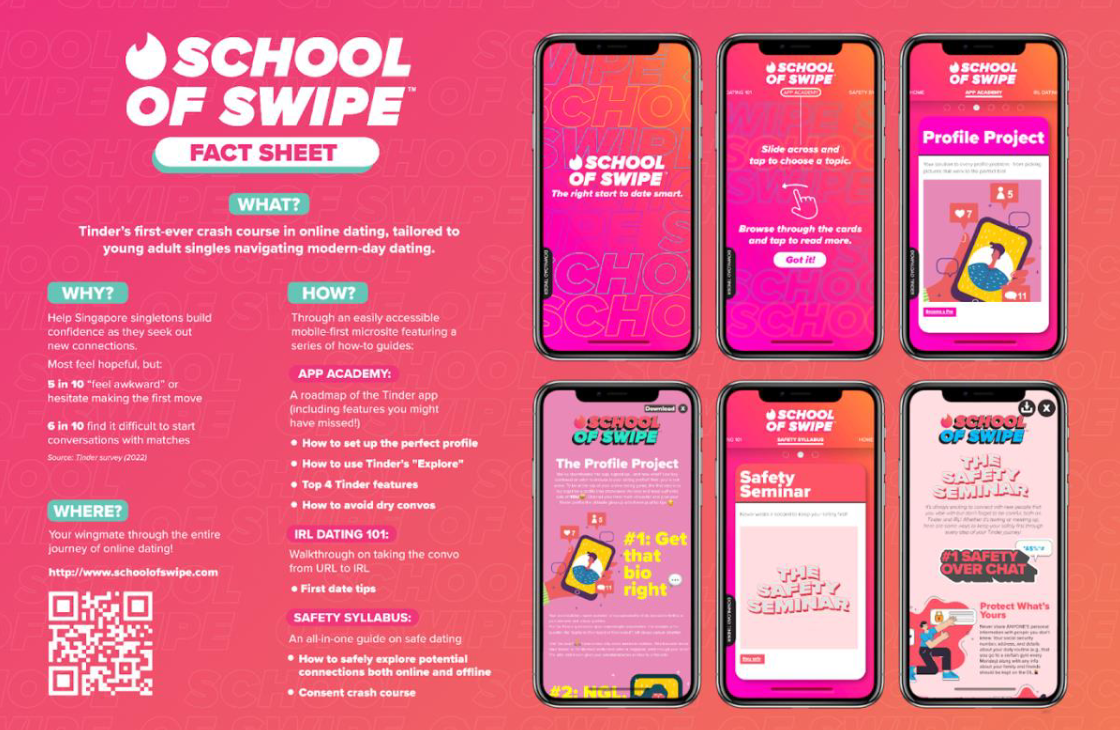
1Internal Tinder Data from Spotify feature 2022. Campus Crush Dating Guide 2023
In August, Tinder launched a new public-awareness campaign, safeguarding users against romance scams across Southeast Asia. Tell us a little more about this campaign. How does Tinder perceive its role in creating positive social impact through responsible dating? How important is it to create a culture of trust with your consumers?
Indeed, we launched a campaign in four Southeast Asian countries to raise awareness about preventing romance scams. The campaign aims to proactively educate users about safety resources available to stay cautious and safe. Users received alerts, messages, and notifications promoting caution against romance scams. In Singapore, users were directed to Scam Alert SG, while in Thailand, Vietnam, and Indonesia, they were guided to Tinder’s Romance Scam resource for tips to protect themselves from online scams.

It is extremely important for Tinder that our users feel confident in making connections online in fun and safe ways. That is why over the last three years, we have significantly invested in Trust & Safety (T&S) product development, bringing our total T&S feature suite to more than 15 innovations. Recognising that safety is complex and personal, these resources aim to continuously educate young daters so they can enjoy an optimal dating experience on our platform.
As technology and the landscape of online dating continues to evolve, where do you think the future of digital dating is headed? Any exciting updates you can share?
Online dating is now the most common way that singles are making new connections. Not only are the majority of people under 30 using dating apps according to a recent survey, but over half (55%) have been — and 37% know someone who has been — in a serious relationship with someone they met on Tinder.1
Technology, namely artificial intelligence (AI) will also continue to be transformative in evolving the online dating space. Tinder already leverages machine learning for various safety features, but the opportunity to evolve these features through the use of AI can potentially make their impact even greater. For example, AI’s capacity to further contextualise language in service of features like ‘Does this bother you?’ and ‘Are you sure?’ is enormous. Most 18-25 year olds (and Tinder) also agree that generative AI can work well as a first prompt,2 as AI’s potential to act like a coach in helping young singles authentically highlight their unique qualities is pretty impressive. Overall, there still remains a lot of testing, exploration, and development that has to happen before significant steps can be taken toward implementing more AI, but we remain optimistic!
1 A study of 4,000 18-25 year old actively dating singles in the US, UK, Australia and Canada between Jan 21, 2023 and Feb 7, 2023 conducted by OnePoll on behalf of Tinder. Future of Dating Report, 2023
2 A survey of 4000 18-25 year olds in the US, the UK, Canada and Australia between April 21, 2023 and April 25, 2023 conducted by Opinium on behalf of Tinder. Future of Dating Report, 2023
Featured image: Tinder Relationship Goal























